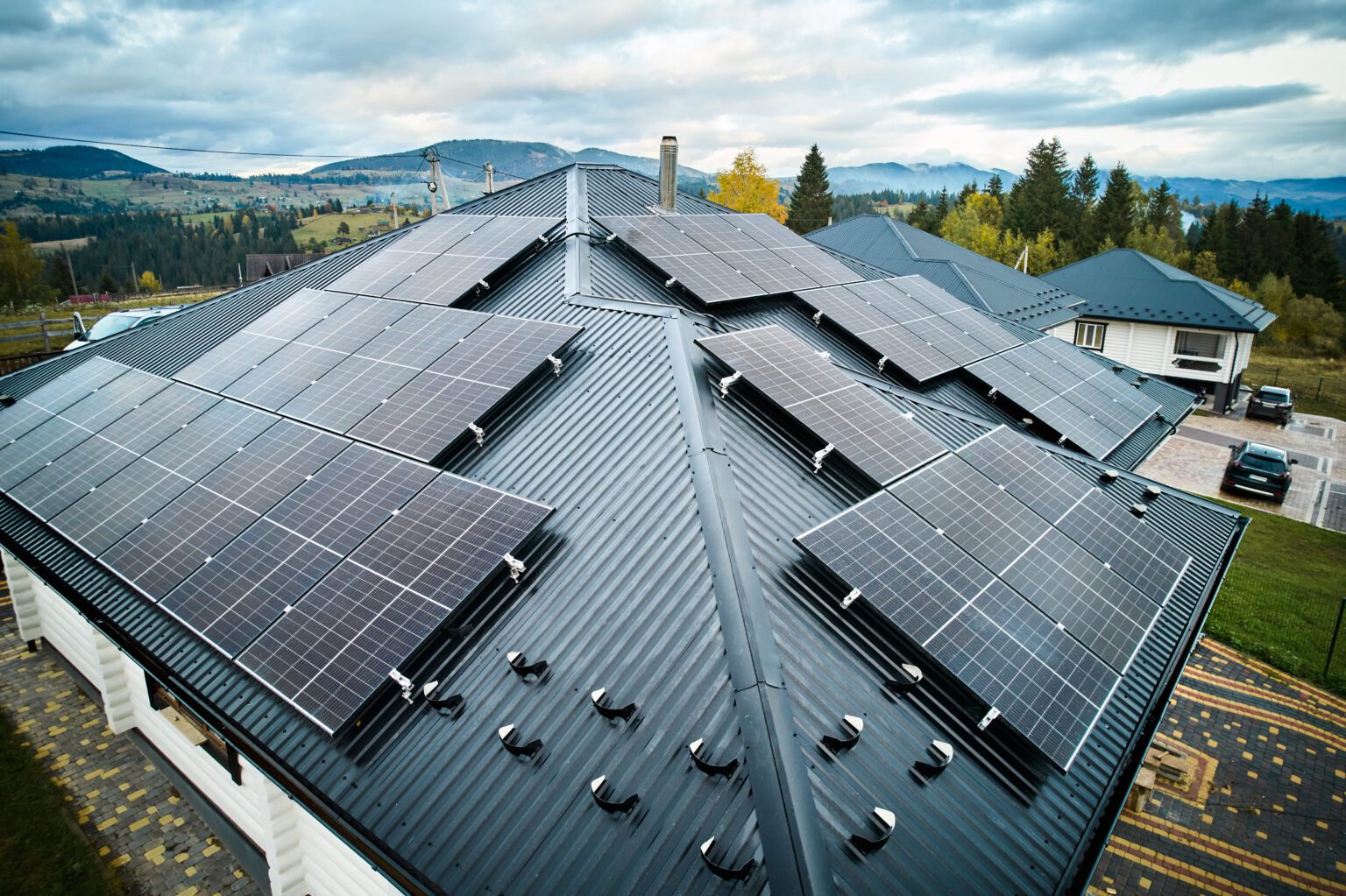Photovoltaic systems and battery storage systems place special demands on firefighting. Although PV systems are statistically considered safe to operate, there is a certain risk of fire due to technical defects, faulty installation or external fire exposure. In Germany, there are already around 1.7 million photovoltaic systems for generating electricity, which means that PV systems on roof or wall surfaces are increasingly likely to be involved in building fires. The right choice of extinguishing agent and an understanding of the specific hazards are therefore crucial for safe and effective firefighting.
Suitable extinguishing agents for various fire situations
Water as the primary extinguishing agent
Water is the primary extinguishing agent used for fires involving PV systems and battery storage systems. The fire brigade can also extinguish buildings with photovoltaic systems, but must observe special safety measures when doing so. When extinguishing with water, a sufficient safety distance must be maintained to minimise the risk of electric shock. Graphics for orientation show which distances must be maintained.
Specialised extinguishing agents for battery storage systems
Extinguishing agent additives can significantly improve the extinguishing success of burning battery storage systems. An extinguishing agent additive based on F-500 EA, which is particularly effective for lithium-ion batteries when added to water in a 21TP3 mixture, is especially effective. Its high extinguishing performance is based on the strong reduction of surface tension, which enables an improved extinguishing effect. Its effectiveness has been confirmed by independent tests, for example at the Dutch institute KIWA.
Special water fire extinguishers with corresponding extinguishing agent concentrates were also successfully tested for their suitability for battery fires.
CO₂ fire extinguishers for electrical systems
Carbon dioxide extinguishers are used for electrical systems such as distribution boards or inverters that catch fire inside rooms. CO₂ is electrically non-conductive and vaporises without leaving any residue - ideal for smaller fires in electrical systems.
Powder extinguishers for outdoor use
Portable powder extinguishers (ABC/AB powder) can be used outdoors or for incipient fires for rapid initial firefighting. They are particularly useful where the fire has not yet spread extensively.
Special challenges in firefighting
Electrical hazards for emergency services
Photovoltaic systems continue to produce electricity even when the main power supply is switched off - as long as light falls on the modules. This harbours considerable risks for emergency services, especially if live parts are touched or come into contact with extinguishing water during firefighting operations. Accumulations of water in or on the building can also be energised.
Why no foam for energised electrical systems?
If electrical systems are still energised, do not use extinguishing foam as it contains water and is therefore conductive. There is a risk of electric shock. In addition, the foam can attack the insulation of electrical components, which can lead to consequential damage or reignition of the fire. In such cases, electrically non-conductive extinguishing agents such as CO₂ or dry powder are preferable.
Advanced fire protection systems for PV systems
Automated extinguishing systems with VdS approval
There are systems that have been specially developed for the protection of PV roof surfaces. They combine early fire detection with automated extinguishing technology. A fire can be quickly recognised by heat differential detectors in the vicinity of the PV modules. The targeted distribution of water takes place via specially developed nozzles that work effectively even at low pressure. These systems have been successfully VdS-certified.
Energy-independent extinguishing systems
For particularly high safety requirements, there are autonomous extinguishing solutions that also work in the event of a power failure. They utilise compressed air cylinders, compact foam containers and temperature-controlled trigger units. A heat-sensitive line underneath the solar modules serves as a trigger: if the temperature rises above a defined value, the extinguishing process is started automatically - without any external power supply.
Recommendations and best practices
Precautionary measures during installation
Professional installation by qualified specialists is essential. Incorrect installation or incompatible components are among the most common causes of PV fires.
Special training for emergency services
Fire brigades require specific training for the safe handling of PV fires. If it is already known when the alarm is raised that a PV system is involved, an electrically qualified specialist should be called in.
Use of specialised extinguishing agents
Only suitable extinguishing agents such as F-500 EA should be used for fires on battery storage systems and lithium-ion cells. These not only offer greater effectiveness, but - when used correctly with special nozzles and in compliance with safety distances - even allow extinguishing under electrical voltage. Approval in accordance with DIN VDE 0132 is available.
Firefighting PV systems and battery storage systems requires specific knowledge and the right choice of extinguishing agents. As these technologies become more widespread, the importance of adapted fire protection concepts and specialised training for emergency services will continue to increase.
Fritz Manke GmbH provides comprehensive advice on all aspects of fire protection and security. Please feel free to contact our experts.
